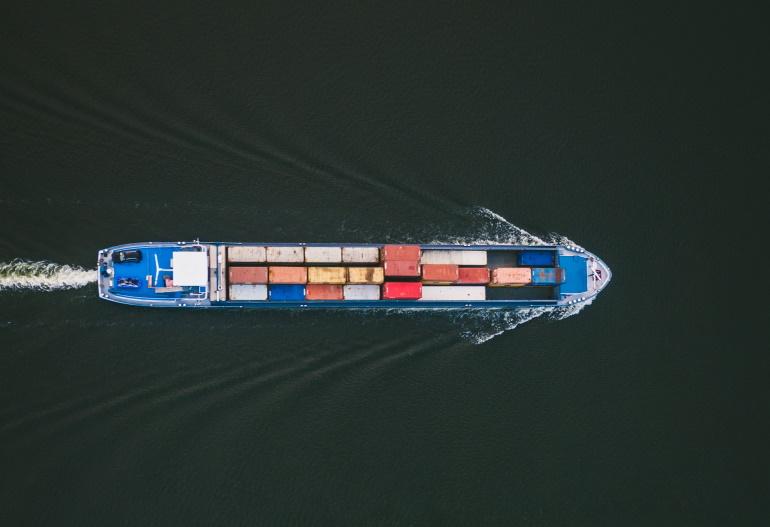The shipping industry at a crossroads
Blog Article - March 19, 2020
Today, shipowners of the world stand at a major crossroads. For over a century, the shipping industry has relied almost entirely on heavy fuel oil (HFO) to power the colossal engines housed in the ships that carry the world’s cargoes from continent to continent.
While relatively inexpensive as a commodity, its high sulphur content and significant SOx and NOx emissions that result from burning HFO imposed a significant environmental penalty. Therefore, the industry has been under pressure in recent years to clean up its act and make the shift to burning cleaner fuels.
With the International Maritime Organization’s (IMO’s) global sulphur cap entering into force on 1 January 2020, the pressure on the industry to use cleaner fuels for ship propulsion has intensified. This race to achieve regulatory compliance has forced shipowners to make important decisions on how to comply, and rapidly. Choices ranged from continuing to use HFO and install scrubbers, through considering gasoil or low sulphur fuel oil, to upgrading liquefied natural gas (LNG).
These decisions have forced shipowners to weigh up capital investment costs (CAPEX) versus long-term operating costs (OPEX) while also taking a stand on their environmental impact, both today and in the future.
However, while installing a scrubber on board or switching to low-sulphur fuel may achieve compliance with the IMO Global Sulphur Cap 2020 regulation, it does not help reduce greenhouse gas (GHG) emissions. Therefore, LNG has proved itself to be a viable and competitive option as a marine fuel since it is the best available option today that meets global sulphur cap regulations and helps achieve a significant reduction in GHG emissions.
An independent study commissioned by SGMF and SEA\LNG in April 2019 showed that burning LNG generates almost zero sulphur and particulate matter emissions. It also contributes to a reduction of up to 21% of GHG emissions from well-to-wake when compared to current, conventional, oil-based marine fuels. These GHG reductions are expected to improve as technological enhancements help to further reduce methane slip from certain engine types.

Removing barriers to the adoption of LNG
With such a clear environmental advantage compared to other solutions, the question that must be asked is: which obstacles could hinder the adoption of LNG as a marine fuel? These fall into two broad categories. First, there are concerns surrounding higher CAPEX requirements to retrofit a fleet. A response to this obstacle is that, over time, LNG remains competitive due to its lower molecule price per energy unit compared to conventional fuel.
Second, questions of standardisation, education, perception and industry acceptance remain obstacles. As already mentioned, we are working in an industry that has been burning the same fuel, and generally operating in the same way, since the beginning of the last century. And even though LNG is an irrefutable, safe, clean fuel that is well-known and appreciated in other industries, adopting a new fuel in the shipping industry is a major responsibility.
Safety standards, interfaces and operational procedures must be agreed upon. Training programmes must be established. Ports must be guided and prepared. In each of these areas, SGMF has stepped forward to bring stakeholders together, allowing us to collaborate and advance much more quickly than if everyone had stayed working in their own corners. The guidelines and frameworks issued by SGMF to support the safe use of gas fuel have become the industry standards.
We are indeed advancing as an industry and together we have already accomplished major achievements. LNG bunkering infrastructure is already well developed in north west Europe (in Rotterdam and Zeebrugge) and is developing very rapidly across maritime hubs in Asia (Singapore, China, Japan and South Korea), around the Mediterranean Sea and in the US Gulf and along the US East Coast. Consequently, nine out of the top 10 bunkering ports will have LNG available in the short term.
At Total Marine Fuels Global Solutions (TMFGS), we are developing safe, competitive and highly compelling LNG bunkering solutions that adapt to the logistical needs of a wide variety of customers, ranging from deep-sea container vessels to cruise vessels, ferries and tankers based on their operational requirements. This includes LNG bunker vessels, LNG trucks and ISO containers. We are moving rapidly and, as we progress, we value the work that we do with SGMF very highly to help bring the entire industry forward on standardisation, in educating stakeholders, in training and in providing a common industry voice when it comes to regulatory bodies.
This is a critical time for the shipping industry as it shifts to a low-emission era while simultaneously answering the call to help solve the critical issue of our time: climate change.

Also published on ShipInsight's magazine, What's Trending in 2020

